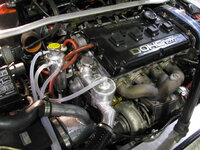TSiAWD666
Supporting Vendor
- 2,648
- 899
- Aug 15, 2003
-
Herndon,
Virginia
Hey folks, in building my car for time trialing I'd learned about the benefit/necessity of a coolant surge/breather/header tank and recently purchased the Greddy Breather Tank to see if it would be sufficient. It's a new tech and new product to me and this tech isn't a commonly discussed modification on our boards so I thought I'd share what you get with it. Below is a picture of the unit and the parts it comes with.
Function is mainly to facilitate removing air bubbles from your coolant, and also provide a location to accomodate coolant surge. This tank becomes your highest point in the system, swirls coolant around to promote removing air, and air bleeds into it and it has the radiator cap which will open and bleed air to your overflow tank.
I have no personal experience with these problems. I learned about this while working with Ron Davis Radiators, a well known radiator company that produces units for consumer cars to full on road racing, rally, and nascar, as they're producing a custom radiator for me. The fellow I worked with insisted it's a must have on a race car and educated me a bit on the tech (which I won't waste time with here). Also, I spoke with Drew (gixxerdrew) and he basically said "yeah, I'm working on designing one of those..." which to me means I better get one In my research I found these in some form or another are found stock on many cars, though it seems mostly european cars.
In my research I found these in some form or another are found stock on many cars, though it seems mostly european cars.
I chose this product because it had the ports in the right locations (inducing swirl in the coolant), came with a dummy radiator cap for a DSM, and worked with other DSM-compatible radiator caps. Also I had thought the size was big enough.
Unit I received is about 10" tall from bottom to top, though the coolant storage cylinder is only about 8". I'd guess it holds maybe... .5-.75 liters at best. I'm not sure if this is enough volume for coolant surge, but it looks like it will work well for air removal. Box comes with the tank, a dummy cap, clear coolant hose (not pictured, I left it in the box, oops), hose clamps, and universal mounting hardware and brackets, along with a few thread-in fittings for use with tapping into your cooling system. Almost everything you'd need. Most with stock cooling systems will need some way to tap into the return/outlet of the radiator which can be accomblished with an inline hose adapter in which you can thread in a tap (Greddy sells one of course). I don't have one as my new radiator has a port in the endtank.
Anyway, just thought I'd share info on the product
Function is mainly to facilitate removing air bubbles from your coolant, and also provide a location to accomodate coolant surge. This tank becomes your highest point in the system, swirls coolant around to promote removing air, and air bleeds into it and it has the radiator cap which will open and bleed air to your overflow tank.
I have no personal experience with these problems. I learned about this while working with Ron Davis Radiators, a well known radiator company that produces units for consumer cars to full on road racing, rally, and nascar, as they're producing a custom radiator for me. The fellow I worked with insisted it's a must have on a race car and educated me a bit on the tech (which I won't waste time with here). Also, I spoke with Drew (gixxerdrew) and he basically said "yeah, I'm working on designing one of those..." which to me means I better get one
 In my research I found these in some form or another are found stock on many cars, though it seems mostly european cars.
In my research I found these in some form or another are found stock on many cars, though it seems mostly european cars.I chose this product because it had the ports in the right locations (inducing swirl in the coolant), came with a dummy radiator cap for a DSM, and worked with other DSM-compatible radiator caps. Also I had thought the size was big enough.
Unit I received is about 10" tall from bottom to top, though the coolant storage cylinder is only about 8". I'd guess it holds maybe... .5-.75 liters at best. I'm not sure if this is enough volume for coolant surge, but it looks like it will work well for air removal. Box comes with the tank, a dummy cap, clear coolant hose (not pictured, I left it in the box, oops), hose clamps, and universal mounting hardware and brackets, along with a few thread-in fittings for use with tapping into your cooling system. Almost everything you'd need. Most with stock cooling systems will need some way to tap into the return/outlet of the radiator which can be accomblished with an inline hose adapter in which you can thread in a tap (Greddy sells one of course). I don't have one as my new radiator has a port in the endtank.
Anyway, just thought I'd share info on the product




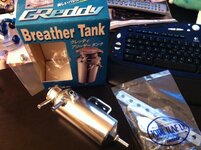
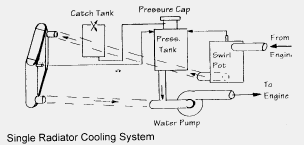
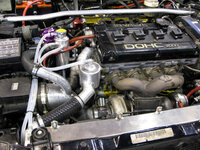
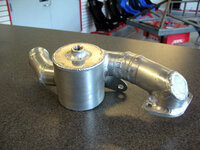
 I put some on my water pipe just as you have, as well as on the bottom of the oil pan where the downpipe passes by it to try and keep the exhaust heat away.
I put some on my water pipe just as you have, as well as on the bottom of the oil pan where the downpipe passes by it to try and keep the exhaust heat away.